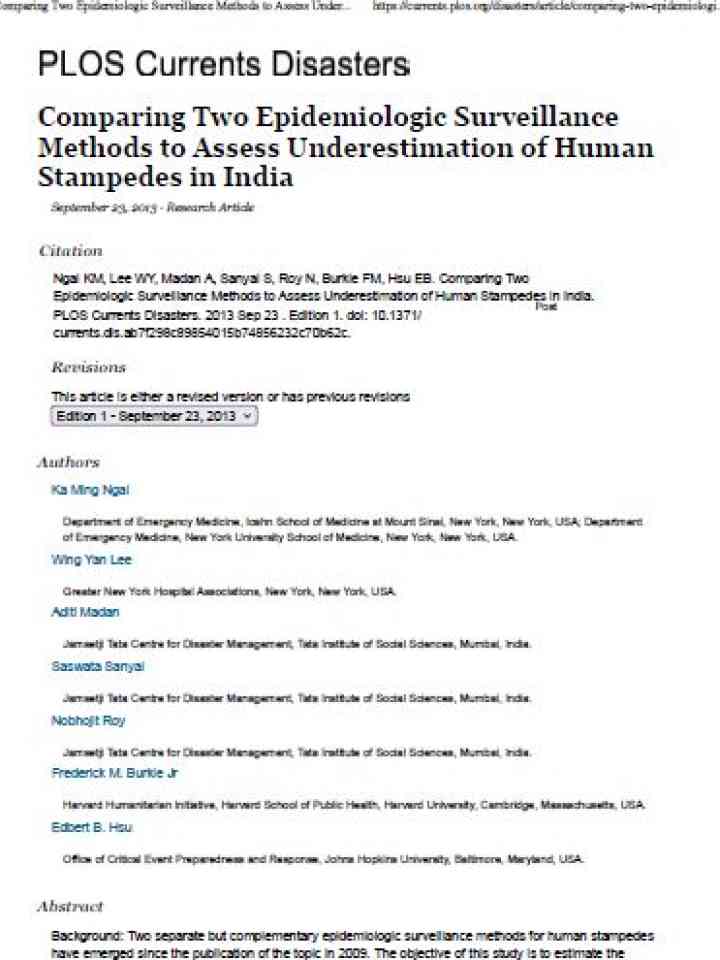Comparing two epidemiologic surveillance methods to assess underestimation of human stampedes in India
The objective of this study is to estimate the degree of underreporting in India with regards to stampedes. Two separate but complementary epidemiologic surveillance methods for human stampedes have emerged since the publication of the topic in 2009. The Ngai Search Method was compared to the Roy Search Method for human stampede events occurring in India between 2001 and 2010.
Many causes accounting for the global increase in human stampede events can only be elucidated through systematic epidemiological investigation. Focusing on a country with a high recurrence of human stampedes, we compare two independent methods of data abstraction in an effort to improve the existing database and identify pertinent risk factors. The authors concluded that their previous publication underestimated stampede events in India by approximately 18% and an international standardized database to systematically record occurrence of human stampedes is needed to facilitate understanding of the epidemiology of human stampedes.
Explore further
